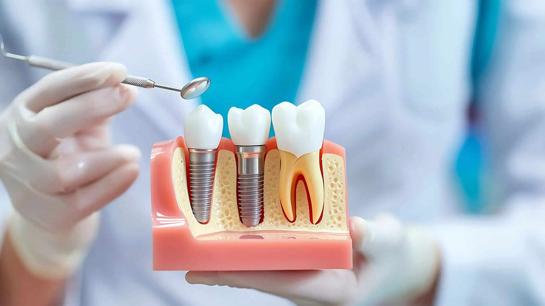Hair Transplant Abroad: Honest Answers on FUE and What It’s Really Like to Go Overseas
Why Do So Many People Quietly Consider a Hair Transplant Overseas?
You probably didn’t imagine yourself here—skimming search results for hair transplant abroad, investigating flights, juggling questions you’d never ask your barber. Maybe your hair started thinning in your thirties. Maybe that patch at the crown changed how you see yourself, or you’ve noticed the family album creeping into your future. You thought about products, hats, angles, maybe even going full “buzz cut”—until you stumbled on stories from people who left the country for real solutions.
And suddenly, the idea of hair transplant overseas starts to feel both brave and rational. You’re not alone. It’s men and women of every background—people who want to nudge things back in their favor, on their terms, and (if you’re honest) at a price that means living life, not just saving for surgery.
What is FUE? (And Why Choose FUE for a Hair Transplant Abroad?)
Let’s break it down: Follicular Unit Extraction (FUE) is a surgical technique where each hair follicle is harvested one-by-one with a tiny punch tool, usually from the back or side of your head. No big strip, no obvious scar—just short dot marks, allowing you to keep hair cropped back home and abroad.
Why do people travel for FUE hair transplant overseas?
- Fewer scars for a confident short haircut.
- Shorter downtime—a return to sightseeing, work, or just daily life before anyone even suspects.
- More personalization—good clinics work to match your natural angle, density, and swirl, not just “fill the gaps.”
The global market—especially in Turkey, Poland, Spain, Hungary, and Thailand—now sets the pace with dedicated FUE suites, staff fluent in English, and pricing that takes the sting out of “home clinic” bills.
Why Consider Hair Transplant Abroad—What’s The Real Edge?
- Serious cost savings.
Local clinics: $7,000–$15,000 isn’t rare for FUE. With a hair transplant abroad package? You’ll see full deals for $2,000–$5,500, and that can include the surgery, hotel, airport shuttle, and aftercare—sometimes even your meds. - Volume plus artistry.
Clinics abroad, especially those serving international clients, run far more FUE cases a month than many local surgeons—meaning sharper hands, more polished teams. - Modern gadgets, modern results.
Motorized punches, high-res imaging, DHI pens, “sapphire blades”—abroad, terms like these aren’t sales fluff—they’re built into the workflow. - A new kind of privacy.
Maybe you want to quietly sidestep awkward questions at work or home. Hair transplant overseas lets you heal in peace, show up with a new look, and control the whole narrative.
The True Journey: Step-By-Step Through Hair Transplant Overseas
- Starting With Questions (and Caution)
You start googling, emailing clinics about hair transplant abroad, maybe sending fuzzy photos or listing past products you’ve tried. Watch for the answers—real clinics ask real follow-ups, not just “book now” spam. - Consults and Planning
A reputable FUE clinic offers a call or detailed message from a doctor (not just a tech). You’ll talk about graft counts, realistic density, and even limitations—no miracle promises here. They’ll also walk you through logistics: what to pack, what hotels to choose, and how to prep for surgery abroad. - Arriving and Pre-Op
Land at your destination, meet coordinators who act like travel guides and confidantes. Your scalp is mapped (often again), your health double-checked, your questions answered in person. - FUE Day: What It Really Feels Like
- Local anesthesia numbs tiny zones. You may get to listen to music, chat, or just take in the vibe.
- Dozens to thousands of grafts are harvested dot-by-dot, no strip, no stitches—then carefully implanted to match your ideal hairline and density.
- Break to eat, hydrate, stretch—no conveyor-belt pacing.
- Recovery—Less Dramatic Than You’d Think
- Most walk out the same day—maybe in a hat, with written aftercare lists in English.
- Communication rarely stops at check out; expect WhatsApp, text, or email support on the trip and back home.
- After a few days, the redness fades, scabs flake, and most swelling subsides.
Comparing Hair Transplant Abroad vs. Back Home
| Feature | Hair Transplant Abroad | At Home |
|---|---|---|
| Price | $2,000–$5,500 (all-in) | $7,000–$15,000 |
| Wait Time | Days–weeks | Months |
| Surgeon Interaction | Direct, patient-centered | Sometimes rushed |
| Graft Volume | Often higher/session | Often split over visits |
| Aftercare | Written/remote, home doctor | Walk-in, local |
| Privacy | High—travel días discretion | Depends—can be harder |
Key Tech and Clinic “Green Flags” for FUE Hair Transplant Overseas
- Board-certified, English-speaking surgeons who focus on FUE.
- Documented volume: “How many FUEs per month?” If the answer’s tiny, keep looking.
- Real, unedited before/after photos—not just picked cases.
- All-in written pricing (no surprises for anesthesia, aftercare, or “extra grafts”).
- Modern tools: sapphire blades, fine motor punches, microscope-aided dissection.
- Remote/ongoing support for months, not just the week after your procedure.
What Is Realistic to Expect?
- Transplanted hairs shed in week 2–4 (“shock loss”), then return at months 3–6.
- Final density, look, and direction: full maturity at 12 months (sometimes longer for crown).
- Scarring: almost invisible dots in the donor zone—fade with time and gentle styling.
FUE Hair Transplant Abroad: Who’s a Match?
Best suited for:
- Men and women with steady donor hair at the back/sides.
- Those who want more styling options, short hair, or fewer visible scars.
- People comfortable managing a few days of travel/recovery overseas, and able to coordinate aftercare with a local doc.
Maybe not ideal if:
- You want a “magic” solution for diffuse thinness (sometimes not enough donor hair).
- You can’t travel comfortably or have major health concerns.
- You’re sensitive to even small dot scarring with ultra-short hair.
Recovery Timeline: Quick & True
- Days 1–3: Swelling peaks, scalp feels tight. Elevate head at night.
- Days 4–7: Mild crusts and pinkness.
- Days 8–12: Gently return to normal shampooing, light exercise.
- Weeks 2–3: Most “evidence” invisible beneath normal styling.
- Months 2–6: New growth, can trim or style gently; enthusiasm begins building.
Real talk: Most patients return to home life in a week; nearly everyone feels “normal” before the final results show.
Honest Pros, Cons, and Surprises
Upsides:
- Big savings, plus a vacation or discreet healing away from home.
- High-volume teams: more refined technique, less guesswork.
- Personalized attention—many clinics treat far fewer patients per surgeon per day.
Downsides:
- Travel adds variables—jet lag, different foods, and solo downtime.
- Home aftercare: you’ll need a local GP or dermatologist for “just in case” help.
- Not every hair will “make it”—even world-class clinics are honest about some “take” loss.
Final Thoughts: Taking Control, Growing Confidence
Choosing a hair transplant abroad isn’t just budget math—it’s a statement: “I get a say.” Whether you chase stealth, savings, or the chance to combine a new look with a new view, FUE puts subtle control back in your hands (or on your head, as it were).
Do your homework. Ask direct questions, demand photos, talk to real staff. Take your time with decisions and let yourself imagine the impact—a year from now, when that reflection finally fits.























